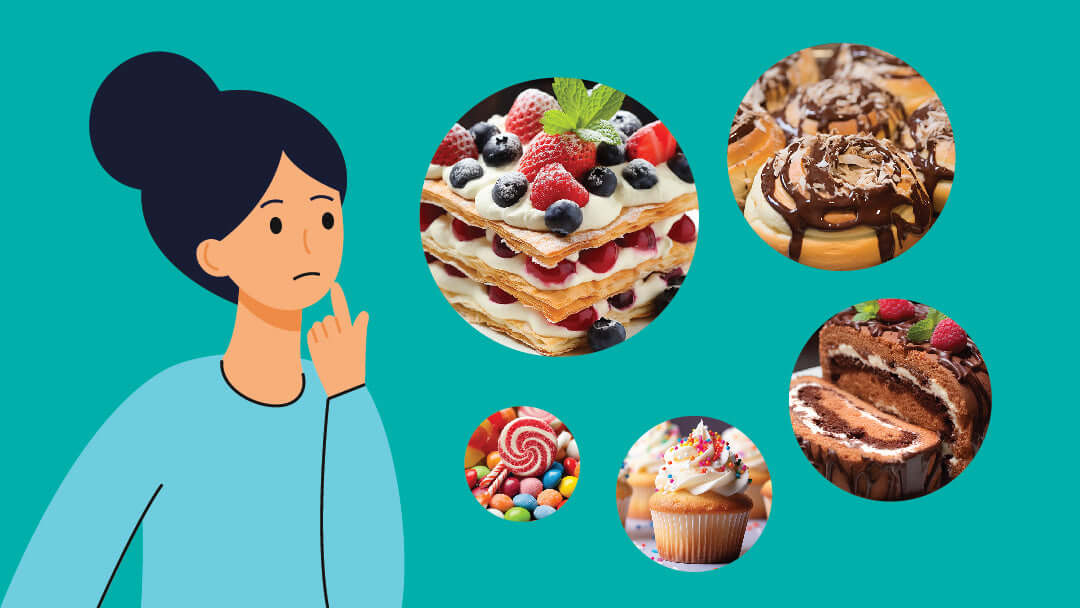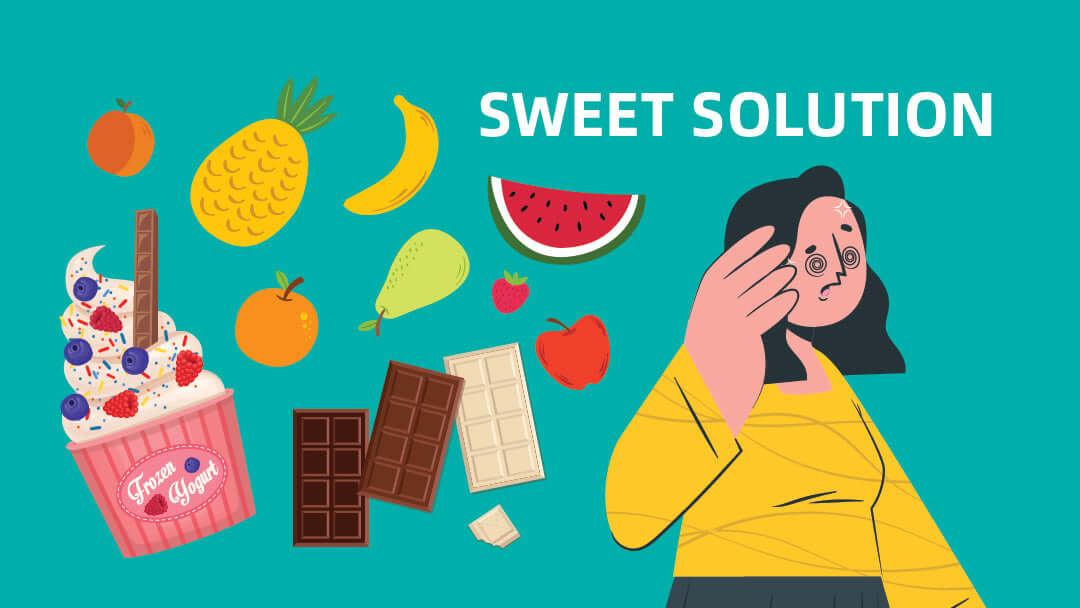Carbohydrates are one of the three macronutrients that provide your body with energy, along with protein and fat. However, not all carbs are created equal - they come in two main forms, simple and complex. Understanding the differences between simple vs complex carbohydrates is key for managing your glucose levels and choosing the right carbs for your dietary needs and goals.
What are Simple Carbohydrates?
Simple carbs, also called high glycemic carbohydrates, consist of one or two sugar units, are broken down very quickly by your body. They have a high glycemic index, meaning they cause your glucose levels to spike rapidly after consumption. Foods high in simple carbs include:
- Sugars (sucrose, glucose, fructose): Table sugar, honey, molasses, juice, syrups.
- Refined starches: White bread, pasta, white rice, crackers, snack chips.
- Starchy vegetables: Potatoes, sweet potatoes, beets.
When you eat simple carbs, your body breaks them down into glucose very rapidly. This causes insulin, the hormone that regulates glucose, to surge and drive glucose into cells for energy or storage. However, the spike in glucose is followed by a sharp drop, which leaves you feeling hungry soon after. Over time, frequent glucose highs and lows from simple carb intake can increase your risk of obesity, heart disease and diabetes.
What are Complex Carbohydrates?
In contrast, complex carbohydrates are made up of three or more sugar units linked together. This complex structure takes the body longer to break down, resulting in a slower and steadier release of glucose into the bloodstream. Foods high in complex carbs include:
- Whole grains: Whole wheat, oats, brown rice, quinoa, barley, rye.
- Legumes: Beans, lentils, chickpeas, peas.
- Vegetables: Broccoli, cauliflower, spinach, mushrooms.
- Fruits: Berries, citrus, melons, apples, pears, bananas.
This is because complex carbs contain fiber, which slows digestion. Fiber requires more chewing and adds bulk to food in the gut. It also binds to carbohydrates and sugar molecules, preventing rapid absorption into the bloodstream. As a result, complex carbs release energy gradually and keep you feeling full for longer.
Glycemic Index vs Glycemic Load
When comparing carbohydrates, it's not enough to just look at the glycemic index (GI) rating alone. You also need to factor in the glycemic load (GL), which considers the total amount of carbohydrates in a serving.
For example, watermelon has a high GI but low GL because a typical serving size contains few total carbs. Potatoes have a medium GI but high GL since a serving is quite starchy. Always pair GI and GL data to get the most complete picture of a food's impact on glucose.
Simple vs Complex Carbs - Which Should You Choose?
For optimal health, focus on eating mostly complex carbohydrates with each meal to stabilize glucose levels. Limit highly refined simple carbs like white bread, pasta and sugary snacks between meals. Here are some guidelines:
- Choose whole grains over refined grains whenever possible. Opt for brown rice over white, whole wheat instead of white bread.
- Go for leafy vegetables more than potatoes or other high-starch picks. Sweet potatoes offer fiber to balance their carb content.
- Eat fruits whole or juiced without added sugars. Berries are among the lowest glycemic fruits.
- Limit foods high in added sugars like candy, desserts and sugar-sweetened drinks. Treat these as occasional rewards.
- Read labels carefully. Many packaged foods contain hidden added sugars and refined carbs.
- Regularly monitoring glucose levels is essential. Glucose levels can vary due to various internal and external factors.
The SIBIONICS GS1 Continuous Glucose Monitoring (CGM) System is a breakthrough solution designed to provide continuous and hassle-free glucose monitoring. With 24/7 real-time monitoring over 14 days, a user-friendly design, and calibration-free accuracy, SIBIONICS CGM empowers you to take charge of your health effortlessly. Its waterproof feature adds flexibility to your daily routine. Say goodbye to scanning and finger-pricking – SIBIONICS GS1 CGM is here to simplify and enhance your glucose monitoring experience.
Conclusion:
In the pursuit of optimal health, a thoughtful approach to carbohydrate consumption is paramount. Prioritize complex, whole-food carb sources for sustained energy, avoiding spikes and crashes. Limit processed simple carbs. With the SIBIONICS CGM, track food impacts and make optimized daily choices for long-term health.
FAQs:
Q: Do simple or complex carbs give more energy?
A: Both simple and complex carbs provide energy, but they do so at different rates. Simple carbs, found in foods like sugars and refined grains, can provide a quick energy boost. On the other hand, complex carbs, found in whole grains, vegetables, and legumes, release energy more slowly and provide sustained energy over a longer period.
Q: How long does it take to digest complex carbs?
A: It typically takes the body 2-3 hours to fully break down and digest complex carbs compared to 30-60 minutes for simple carbs. This is because complex carbs contain more fiber which slows the digestion process.
Q: Do complex carbs turn to fat?
A: Complex carbs are less likely to be stored as fat compared to simple carbs. When consumed as part of an overall healthy diet, complex carbs provide long-lasting energy and help promote fullness without significant fat storage.
Q: Are carbohydrates essential for the body?
A: Carbohydrates are not technically essential in the same way as proteins and fats, but they play a crucial role in providing energy, especially for the brain and muscles. Many nutritious foods rich in vitamins, minerals, and fiber are also good sources of carbohydrates. A well-balanced diet typically includes a reasonable amount of carbohydrates.
Q: Will complex carbs eventually break down into simple sugars?
A: Yes, through the digestive process all carbohydrates - simple and complex - will ultimately break down into glucose. However, complex carbs take longer to digest and allow for a gradual rise in glucose levels rather than a spike.
Q: What are the best low glycemic index foods?
A: The best low glycemic index foods, with a GI of 55 or less, include most fruits, vegetables, beans, minimally processed grains, pasta, low-fat dairy foods, and nuts. Some examples are berries, leafy greens, and legumes. Additionally, moderate glycemic index foods (GI 56 to 69) like white potatoes, corn, and certain cereals can be consumed in moderation.
SIBIONICS GS1 CGM-Continuous Glucose Monitoring System

26.200 Ft
14-Days Continuous Glucose Monitoring Highly Accurate Sensor Readings Exportable AGP Reports Shareable Real-Time Glucose Data Customizable Glucose Alarm User-friendly App Calibration Free No Scanning IP28 Waterproof … read more










